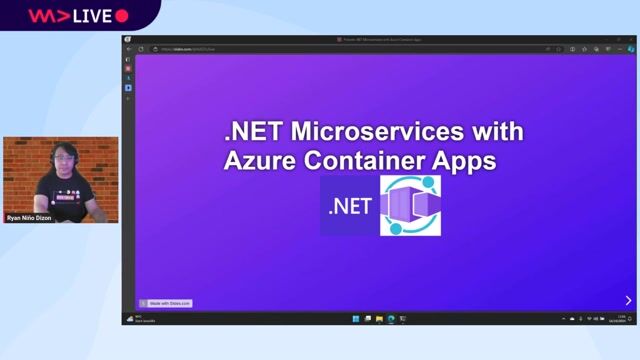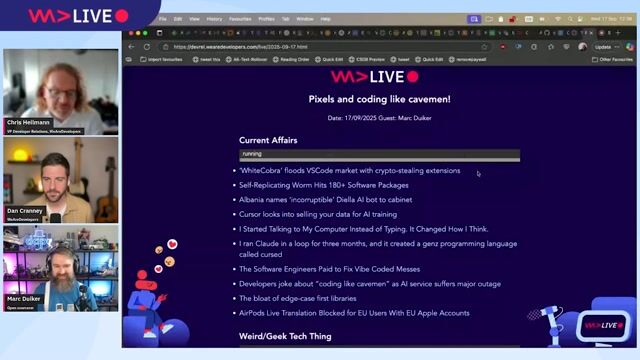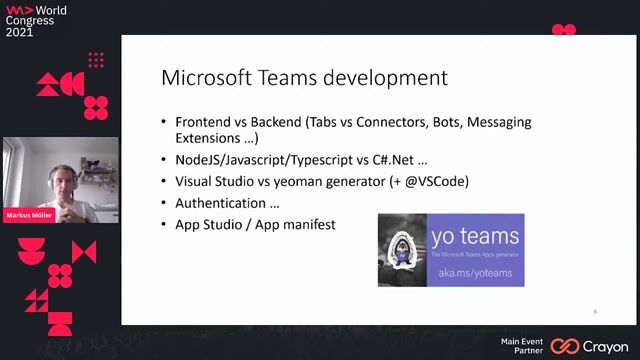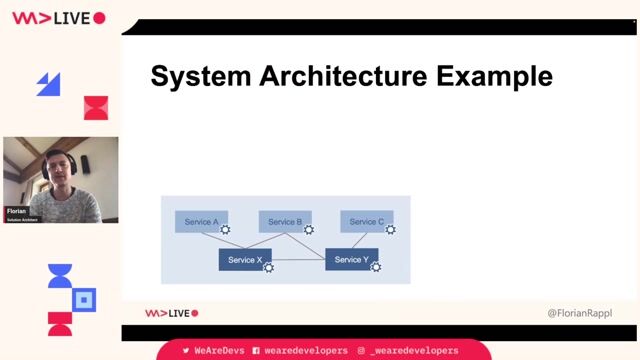Marc Müller
Developing ASP.NET Core Microservices with Dapr: A practical guide
#1about 2 minutes
The inherent complexity of cloud-native microservice applications
A sample fast-food restaurant application demonstrates the common challenges in microservices, including service communication, resilience, and scaling.
#2about 4 minutes
Introducing Dapr as a distributed application runtime
Dapr is a CNCF-graduated project that simplifies microservice development by providing a runtime to handle common distributed system challenges.
#3about 3 minutes
Understanding Dapr's building blocks and the sidecar pattern
Dapr uses a sidecar pattern where building blocks for state, pub/sub, and service invocation run in a separate process communicating via HTTP or gRPC.
#4about 3 minutes
How Dapr components simplify state management with minimal code
Dapr's platform-agnostic components are configured via YAML and accessed through a simple client API, as shown with a state store example.
#5about 3 minutes
Gaining observability and resilience with the sidecar pattern
The sidecar pattern provides out-of-the-box observability, resilience policies like retries and circuit breakers, and security with minimal performance overhead.
#6about 2 minutes
Exploring different ways to host the Dapr runtime
Dapr can be hosted self-contained, in Docker Compose for local development, or in Kubernetes where a sidecar injector automates its deployment.
#7about 3 minutes
Configuring Dapr components and the client in ASP.NET Core
Dapr is configured in ASP.NET Core by registering the client, while components like a RabbitMQ pub/sub are defined using declarative YAML files.
#8about 5 minutes
Implementing service invocation and pub/sub patterns
Dapr simplifies service-to-service calls with built-in mTLS and resilience, and implements pub/sub using CloudEvents and simple controller attributes.
#9about 2 minutes
Using the Dapr actor model for stateful services
The Dapr actor model provides a higher-level abstraction for managing stateful objects, distributing them across instances and handling their lifecycle.
#10about 2 minutes
Evaluating the advantages and drawbacks of adopting Dapr
Dapr accelerates development and ensures portability but introduces a small network hop and uses a generic API that abstracts away provider-specific features.
Related jobs
Jobs that call for the skills explored in this talk.
Featured Partners
Related Videos
 24:08
24:08Dapr in Practice
Marc Klefter
 32:42
32:42.NET Microservices in Azure Container Apps
Ryan Niño Dizon
 1:11:09
1:11:09WeAreDevelopers LIVE - Dapr / Pixels and Generative Art / Open Source and Communities / and more
Chris Heilmann, Daniel Cranney & Marc Duiker
 50:09
50:09Compose the Future: Building Agentic Applications, Made Simple with Docker
Mark Cavage, Tushar Jain, Jim Clark & Yunong Xiao
 43:26
43:26Develop enterprise-ready applications for Microsoft Teams with Azure resources on modern web technologies
Markus Möller
 58:32
58:32Microfrontends with Blazor: Welcome to the Party!
Florian Rappl
 26:46
26:46From Painful to Easy: Discover .NET Aspire
Shako Turashvili
 24:26
24:26Architectures that we can use with .NET
Alexej Sommer
From learning to earning
Jobs that call for the skills explored in this talk.
C# Developer Full Stack .Net Core JavaScript
Client Server
St Albans, United Kingdom
Remote
€100K
Redis
React
Kafka
+8
Power Platform & Microsoft 365 Application Developer/Architect (with AI and Governance Focus)
Devoteam
API
CSS
HTML
Azure
JavaScript
+4


